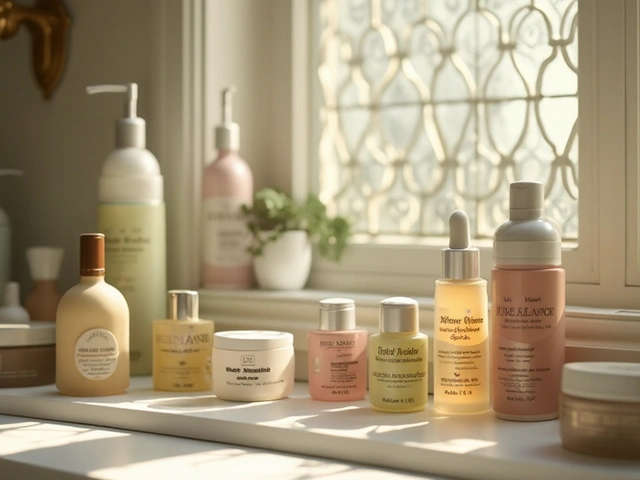Picture this: You’re at Oliver’s baseball game, sun on your face, everything going right—and then, bam. A migraine. You fumble for your Imitrex, praying for it to kick in fast and stick around long enough so you don’t have to play the migraine lottery twice in a day. If you’ve ever had a migraine crash your plans, you know exactly why the question isn’t just if a med will work, but for how long. Duration matters. Let’s dig into just how long Imitrex sticks around and why those details actually make or break your day.
How Imitrex Works in Your Body: The Pharmacokinetic Story
Imitrex hit the market in the ‘90s and shook up the migraine world. The secret sauce is sumatriptan, a triptan that targets serotonin receptors in your brain. Its job: zoom in on swollen blood vessels, squeeze them back down to size, and send that pounding pain into the rearview.
But what happens after you pop that little tablet, nasal spray, or prefilled shot? Here’s the play-by-play:
- Absorption: If you go with the tablet (the most popular version), Imitrex typically shows up in your bloodstream within 30-60 minutes. Shots work way faster—just 10-15 minutes.
- Peak Action: The real magic, or maximum punch, usually hits around 1-2 hours for pills, around 10-20 minutes for injections.
- Half-Life: This is pharmacologist lingo for how long it takes your body to flush out half the drug. Sumatriptan’s half-life is about 2 hours, give or take, which is on the short side for prescription meds.
- Metabolism and Exit: Your liver takes the brunt of breaking down sumatriptan, and in 24 hours, almost all of it is gone from your system, excreted through the kidneys.
Most people feel major relief within two hours of dosing up. But here’s where numbers can mess with your day: the short half-life means Imitrex works quick but doesn’t stick around much. If your migraines like to rebound, you’re not alone.
How Long Does Imitrex Actually Last—And What the Data Says
Now let’s cut through the jargon. How long does Imitrex last depends a lot on how you take it and how your body handles it. Tablets, sprays, and injections all hit the bloodstream differently, but none are marathoners.
Check out this handy table for a breakdown:
| Formulation | Onset of Relief | Peak Effect | Duration in Body | Recurrence Rate |
|---|---|---|---|---|
| Tablet (50-100mg) | 30-60 minutes | 1-2 hours | ~2 hours half-life, mostly gone in 24 hours | Up to 40% |
| Nasal Spray | 15-30 minutes | 1 hour | ~2 hours half-life | Similar or slightly lower |
| Injection (6mg) | 10-15 minutes | 10-20 minutes | ~2 hours half-life | Up to 40% |
In real life, that means a solid 2–4 hours of migraine-killing action. Sometimes it’s enough—but if your migraines last a whole day, Imitrex may clock out too soon, and the pain boomerangs back. Recurrence rates in clinical trials land between 30-40%. So, if that sounds like you, you’re far from alone.
If you’re curious about the nitty-gritty numbers or wondering how long does Imitrex last, plenty of patients (and their doctors) want the same answers. It’s a top-asked question on migraine forums, too. And for good reason—recurrence isn’t just a nuisance, it’s a dealbreaker for school drop-offs, birthday parties, or actual work deadlines.

Why Migraine Recurrence Happens After Imitrex
Here comes the kicker. The short half-life? It’s a double-edged sword. On the one hand, your body clears Imitrex quickly, so less risk of lingering side effects like chest tightness or weird flushing. On the other, once the medicine leaves, blood vessels can re-dilate, and migraine pain returns like an email reply you forgot to send.
Migraine experts point out two big factors:
- The Medication Wears Off: When sumatriptan drops too low in your blood, the headache circuit can reactivate—especially if your migraine triggers (like hormones, stress, or skipping meals) are still there.
- Individual Metabolism: Genetics play a role here. Some people just metabolize meds quicker, so the duration drops. Others may have slower clearance, and Imitrex lasts a bit longer.
In one study, about 40% of migraine patients experienced a return of symptoms within 24 hours of taking sumatriptan. That means two-fifths of people need to redose. But, re-dosing too soon (within 2 hours of the first tablet or injection) isn’t safe. The max is two doses per day, so push that boundary or ignore warnings, and you’re risking serious side effects.
This recurring pain cycle can feel like a cruel joke—especially if you finally feel better and then boom, it’s back. No wonder so many of us keep Imitrex stashed in a coat pocket, glove box, or at work "just in case."
What You Can Do: Tips to Get the Most Out of Imitrex
Migraine-style isn’t one-size-fits-all. So your game plan for Imitrex will look a little different than someone else’s.
- Time Your Dose: Take Imitrex at the first hint of migraine, not hours after full-on pain sets in. The earlier, the better.
- Know Your Patterns: If your migraines constantly return within a few hours of relief, talk to your doc about longer-acting triptans or preventive meds. There’s zero shame in troubleshooting this.
- Consider Formulation: If you wake up puking or can’t swallow pills, the nasal spray or injection are lifesavers. They work quicker and bypass your stomach (which can shut down during a migraine anyway).
- Schedule Rest: Even with symptoms gone, give yourself downtime. Pushing through can bring headaches back fast.
- Educate Family: Teach older kids or partners the signs and what to do, so you can focus on managing, not explaining, during an attack.
- Watch for Side Effects: Chest discomfort, tingling, or heavy sensations aren’t rare—log them. If they’re severe or don’t go away, get help.
- Hydrate: Migraines love dehydration. It sneaks up, especially on busy or hot days outside. Keep water close and sip slow if you can tolerate it.
And here’s something I wish people said more: Everyone’s "migraine math" adds up differently. What works for one person for years might flop for another overnight. Don’t be shy about switching treatments. There are new classes (like gepants and ditans) if triptans stop cutting it.

Other Common Questions About Imitrex Duration and Recurrence
Once you start googling details about how long Imitrex lasts, the rabbit hole is real. Here are some common questions answered in plain talk:
- Can you take Imitrex every day? No. Imitrex is meant for individual migraines, not daily use. Too much can cause medication-overuse headaches and spike blood pressure.
- Is it safe to repeat a dose if the headache comes back? Yes—for most adults, a second dose is okay after two hours, but stick to the daily maximum (usually two doses per 24 hours). Let your doctor know if you need both doses often.
- How long does Imitrex last for cluster headaches versus migraines? It’s about the same—short-acting relief, particularly from injections. Cluster headache patients sometimes need multiple treatments in cycles.
- What if Imitrex works but my head hurts again after a few hours? This means you may have migraine recurrence (a repeat attack after the first clears). Track your timing and bring this up at your next appointment. Your doctor might recommend a longer-acting triptan or preventive approach.
- Is the experience different for kids or teens? Pediatric use is less common, but the duration and recurrence patterns are similar. Always double-check dosing with a pediatric neurologist.
If you’ve been burned by migraine recurrence, you’re not alone. I’ve seen plenty of baseball games and birthday parties temporarily ruined by a rebound headache, despite doing everything right. Stay honest with your doctor about what’s working and what isn’t—sometimes a tweak in timing or using a different triptan can change everything.
For extra context and more patient stories, click to find out how long does Imitrex last. It never hurts to compare your experience to others finding relief (or fighting the recurrence battle) too.





Comments (15)